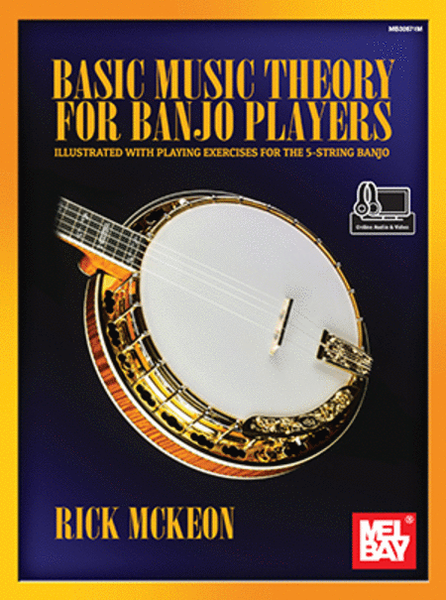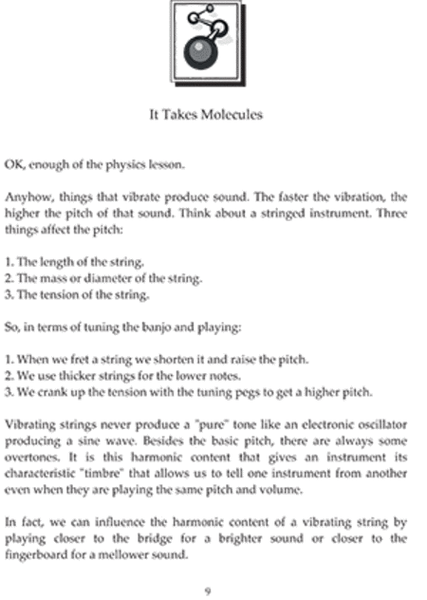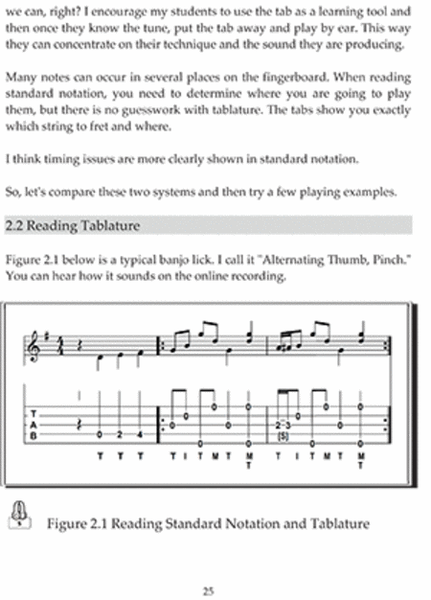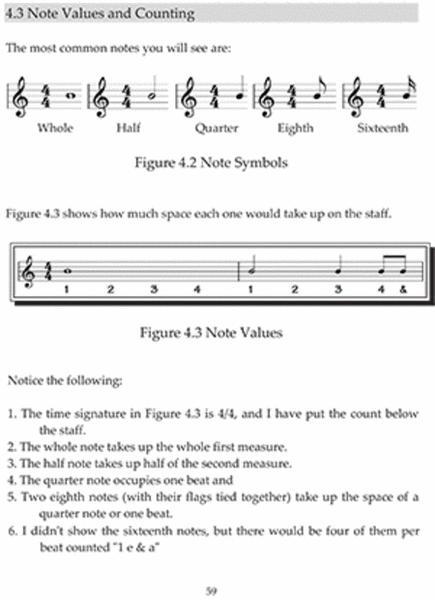Basic Music Theory for Banjo Players
Illustrated with Playing Examples for the 5-String Banjo
-
Ships in 1 to 2 weeks
Details
Description
SKU: MB.30671M
Illustrated with Playing Examples for the 5-String Banjo. Composed by Rick Mckeon. Banjo: 5-String, Technique, Theory and Reference, Banjo: Clawhammer, Perfect binding. Banjo: Clawhammer. Book and online audio/video. 160 pages. Mel Bay Publications, Inc #30671M. Published by Mel Bay Publications, Inc (MB.30671M).ISBN 9781513460789. 8.75 x 11.75 inches.
This book is a hands-on approach to music theory with lots of playing examples for the banjo. Music theory does not have to be mysterious or difficult. In fact, taken a little bit at a time, it's easy and fun.Each of the approximately 50 lessons in this book has a limited scope, but by the time you complete them, you will have a thorough understanding of the basics of music theory as applied to the banjo.While a single book cant cover everything in so vast a subject, the author has tried to choose topics that will address the needs of most beginning banjo players. These include: scale theory, reading tablature and standard notation, key signatures, accidentals, transposition, time signatures and note values, intervals and chord construction, the three kinds of minor scales, pentatonic scales, and more. In addition, each chapter features playing examples and review questions to both test and clarify understanding of the materials presented.Rather than proceeding from chapter to chapter, as each individual banjo player is likely at a different point in their musical journey, the reader is encouraged to jump around and spend more time in those areas that interest you most. The important thing about the journey is to begin.Includes access to online audio and video.
Song List (77)
- Chapter 1. The Major Scale
- 1.1 The Major Scale Is The Basis Of All Music Theory!
- 1.2 Producing Musical Sounds
- 1.3 Whole Steps And Half Steps
- 1.4 What Is A Major Scale?
- 1.5 Playing Examples
- 1.6 Review Questions For Chapter 1
- Chapter 2. Reading Notation And Tablature
- 2.1 Overview
- 2.2 Reading Tablature
- 2.3 Reading Standard Music Notation
- 2.4 Musical Symbols And Song Structure
- 2.5 Playing Examples
- 2.6 Review Questions For Chapter 2
- Chapter 3. Key Signatures
- 3.1 What Is A Key Signature?
- 3.2 Why Even Have Different Keys?
- 3.3 Accidentals
- 3.4 Transposing Between Major Keys
- 3.5 Transposing Instrumentals
- 3.6 Playing Examples
- 3.7 Review Questions For Chapter 3
- Chapter 4. Timing
- 4.1 Overview: Timing Is Everything!
- 4.2 Time Signatures
- 4.3 Note Values And Counting
- 4.4 Rests
- Chapter 5. Musical Intervals
- 5.1 Overview: It'S Like Using A Ruler
- 5.2 Musical Intervals Have A First Name And A Last Name
- 5.3 Easy Ways To Remember The Sound Of Intervals
- 5.4 Pitch Names
- 5.5 Playing Examples
- 5.6 Review Questions For Chapter 5
- Chapter 6. Chord Construction
- 6.1 Overview: What Is Harmony?
- 6.2 The Triad And Stacked Thirds
- 6.3 Major, Minor And Seventh Chords
- 6.4 Open Voicing
- 6.5 Chord Inversions And X/Y Chords
- 6.6 Chord Extensions
- 6.7 Partial Chords
- 6.8 Each Chord Has A Voice
- 6.9 Playing Examples
- 6.10 Review Questions For Chapter 6
- Chapter 7. Chords In A Key
- 7.1 Stacked Thirds: The Triad
- 7.2 Another Way To Look At It
- 7.3 Stacked Thirds: Seventh Chords
- 7.4 You Are Not Lockedinto Anything: Accidentals
- 7.5 Playing Examples
- 7.6 Review Questions For Chapter 7
- Chapter 8. Movable Chords
- 8.1 What Are Movable Chords?
- 8.2 Movable Chords For The Banjo
- 8.3 Using A Capo
- 8.4 Playing Examples
- 8.5 Review Questions For Chapter 8
- Chapter 9. The Nashville Number System
- 9.1 Play By The Numbers
- 9.2 Where'S The Root?
- 9.3 Nns Notation
- 9.4 The Relative Minor
- 9.5 Playing Out Of The Home Position
- 9.6 The 12-Bar Blues
- 9.7 Playing Examples
- 9.8 Review Questions For Chapter 9
- Chapter 10. Minor Scales And Modes
- 10.1 The Natural Minor Scale
- 10.2 The Harmonic Minor Scale
- 10.3 The Melodic Minor Scale
- 10.4 The Minor Pentatonic And Blues Scales
- 10.5 Modes
- 10.6 Playing Examples
- 10.7 Review Questions For Chapter 10
- Chapter 11. Answers To Review Questions
- Meet the Author




 Share
Share